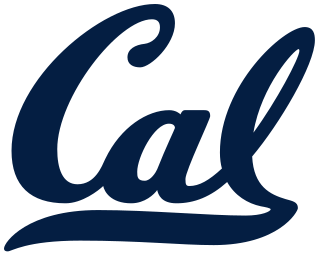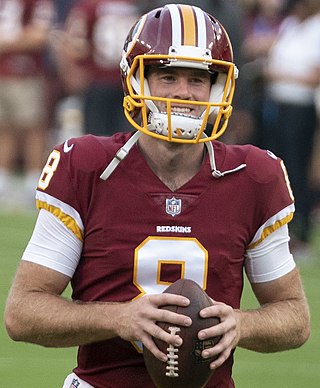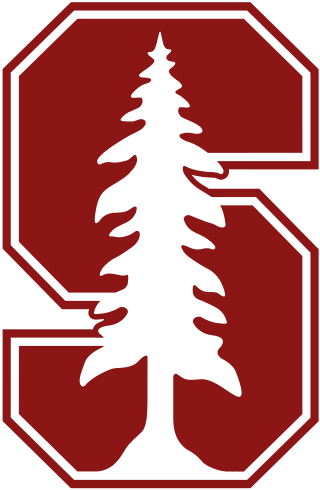Related Research Articles

College football refers to gridiron football played by teams of student athletes. It was through college football play that American football rules first gained popularity in the United States.

The Pac-12 Conference is a collegiate athletic conference, that operates in the Western United States, participating in 24 sports at the NCAA Division I level. Its football teams compete in the Football Bowl Subdivision, the highest level of college football in the nation.

Glenn Scobey Warner, most commonly known as Pop Warner, was an American college football coach at various institutions who is responsible for several key aspects of the modern game. Included among his innovations are the single and double wing formations, the three point stance and the body blocking technique. Fellow pioneer coach Amos Alonzo Stagg called Warner "one of the excellent creators". He was inducted as a coach into the College Football Hall of Fame as part of its inaugural class in 1951. He also contributed to a junior football program which became known as Pop Warner Little Scholars, a popular youth American football organization.

The California Golden Bears football program represents the University of California, Berkeley in college football as a member of the Pac-12 Conference at the NCAA Division I FBS level. The team plays its home games at California Memorial Stadium and is coached by Justin Wilcox. Since beginning of play in 1886, the team has won five NCAA recognized national titles - 1920, 1921, 1922, 1923, and 1937 and 14 conference championships, the last one in 2006. It has also produced what are considered to be two of the oddest and most memorable plays in college football: Roy "Wrong Way" Riegels' fumble recovery at the 1929 Rose Bowl and The Play kickoff return in the 1982 Big Game.

The Stanford Cardinal football program represents Stanford University in college football at the NCAA Division I FBS level and is a member of the Pac-12 Conference's North Division. The team is known as the Cardinal, adopted prior to the 1982 season. Stanford was known as the "Cardinal" for its first two decades of athletic competition, then more commonly as the "Cardinals" until 1930. The name was changed to the "Indians" from 1930 to January 1972, and back to the "Cardinals" from 1972 through 1981. A student vote in December 1975 to change the nickname to "Robber Barons" was not approved by administrators.

A national championship in the highest level of college football in the United States, currently the NCAA Division I Football Bowl Subdivision (FBS), is a designation awarded annually by various organizations to their selection of the best college football team. Division I FBS football is the only National Collegiate Athletic Association (NCAA) sport for which the NCAA does not sanction a yearly championship event. As such, it is sometimes unofficially referred to as a "mythical national championship".

Andrew Austen Luck is an American former football quarterback who played in the National Football League (NFL) for seven seasons with the Indianapolis Colts. One of the most highly touted amateur prospects during his college football career at Stanford, Luck won the Maxwell, Walter Camp, and Johnny Unitas Golden Arm Awards as a senior. He was selected first overall by the Colts in the 2012 NFL Draft.

Kevin Michael Hogan is an American football quarterback who is a free agent. He played college football for Stanford University and was their starting quarterback from 2012 to 2015. He was drafted by the Kansas City Chiefs in the fifth round of the 2016 NFL Draft, and has also played for the Cleveland Browns, Washington Redskins, Denver Broncos, and Cincinnati Bengals.
The 1935 Stanford Indians football team represented Stanford University in the 1935 college football season. In head coach Tiny Thornhill's third season, the team was Pacific Coast Conference co-champions with one loss, allowing opponents to score just 13 points all season.
The 1934 Stanford Indians football team represented Stanford University in the 1934 college football season. In head coach Tiny Thornill's second season, the Indians allowed only 14 points during the entire regular season, logged seven shutout victories, and were undefeated in the Pacific Coast Conference. The team represented the conference in the Rose Bowl, losing to Alabama, 29–13.
The 1901 Stanford football team was an American football team that represented Stanford University as an independent during the 1901 college football season. The team was led by Charles Fickert, the first former Stanford player to serve as head football coach at his alma mater. The team played its home games at Stanford, California.
The 1919 Stanford football team represented Stanford University in the 1919 college football season.
The 1949 Stanford Indians football team represented Stanford University in the 1949 college football season. Stanford was led by fifth-year head coach Marchmont Schwartz. The team was a member of the Pacific Coast Conference and played their home games at Stanford Stadium in Stanford, California.

The Stanford–USC football rivalry is an American college football rivalry between the Stanford Cardinal and the USC Trojans, both members of the Pac-12 Conference and the only private schools in the conference. The two teams first played in 1905 and have met nearly every year since 1919, frequently vying for the conference championship and a berth in the Rose Bowl. Stanford is USC's oldest current rival.
The 1902 Stanford football team represented Stanford University in the 1902 college football season and was coached by Carl L. "Clem" Clemans in his only season coaching the team. Clemans played for Stanford's first football teams and was the team's first captain. He scored the first two touchdowns in the first Big Game against California.
The 1903 Stanford football team represented Stanford University in the 1903 college football season and was coached by James F. Lanagan, a former Stanford baseball player, in his first season coaching the team.
The 1937 Stanford Indians football team represented Stanford University in the 1937 college football season. The team was coached by Tiny Thornhill in his fifth season at Stanford and played their home games at Stanford Stadium in Stanford, California.
The 1921 Stanford football team represented Stanford University in the 1921 college football season. They were coached by Eugene Van Gent in his only season as head coach. The team played most of its home games at the 15,000-seat Stanford Field while construction on the new 60,000-seat Stanford Stadium was being completed. Stanford Stadium officially opened for the final game, the Big Game against California, in which the Bears defeated Stanford 42–7.
The 1922 Stanford football team represented Stanford University in the 1922 college football season. They were coached by Andy Kerr in his first season as head coach. For the first time, the team played all its home games at Stanford Stadium, the construction of which had been completed at the end of the previous season. With construction of California Memorial Stadium beginning, Stanford hosted the Big Game for the second straight year, the only time the game was played in successive seasons at Stanford Stadium.
The 1920 Stanford football team represented Stanford University in the 1920 college football season. They were coached by Walter D. Powell in his only season coaching the football team. Home games were played on campus at Stanford Field.
References
- ↑ "Stanford Game-by-Game Results; 1938–1942". College Football Data Warehouse. Archived from the original on 2014-10-03. Retrieved October 3, 2014.
- ↑ Harry Borba (October 2, 1938). "Broncs Triumph, 22-0: Santa Clarans Pour Through Stanford Line; Register Third Straight Win Over Cards". The San Francisco Examiner. pp. Sports 1, 3 – via Newspapers.com.
- ↑ "1939 NFL Draft". Archived from the original on November 2, 2010. Retrieved October 3, 2014.